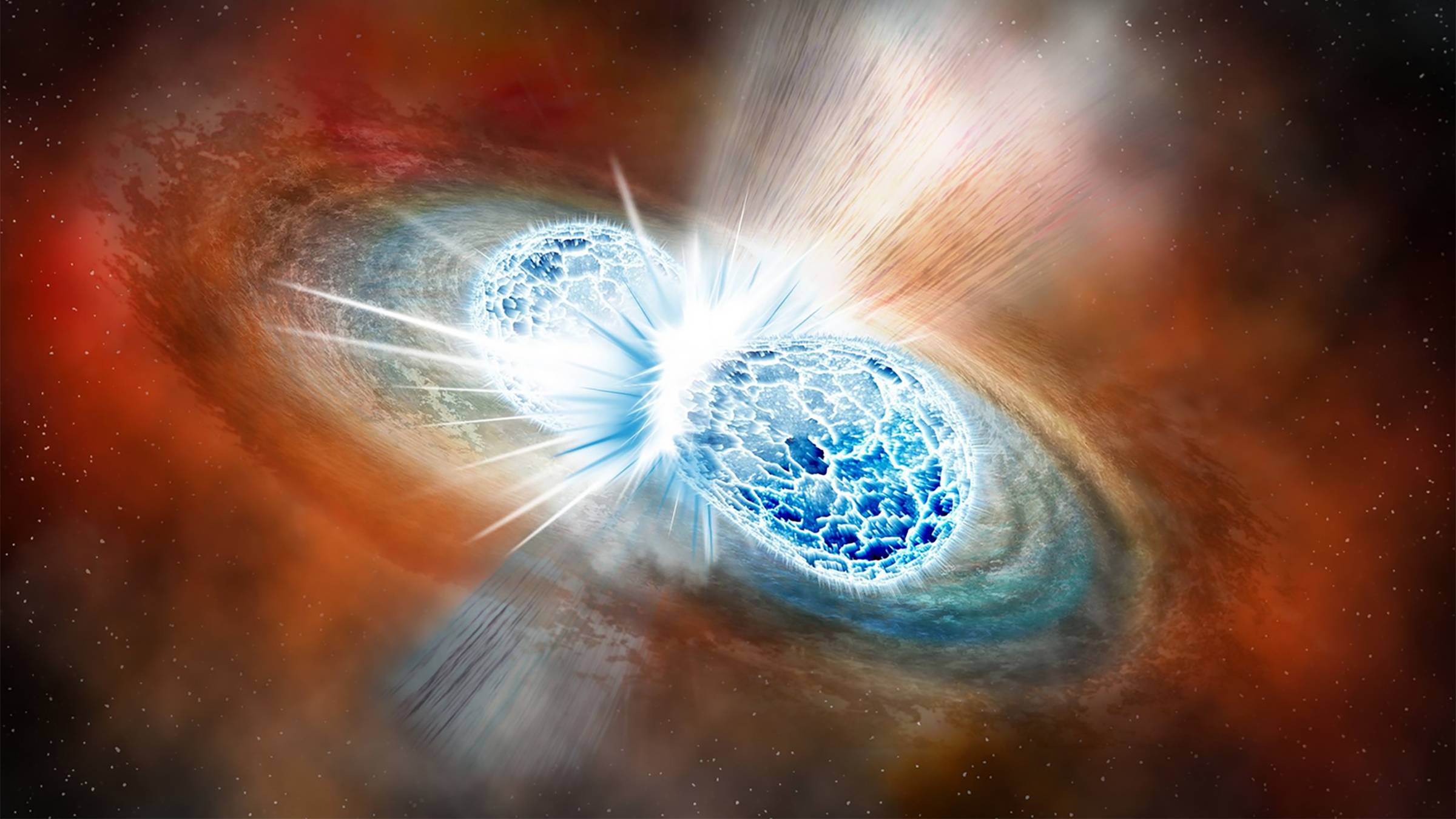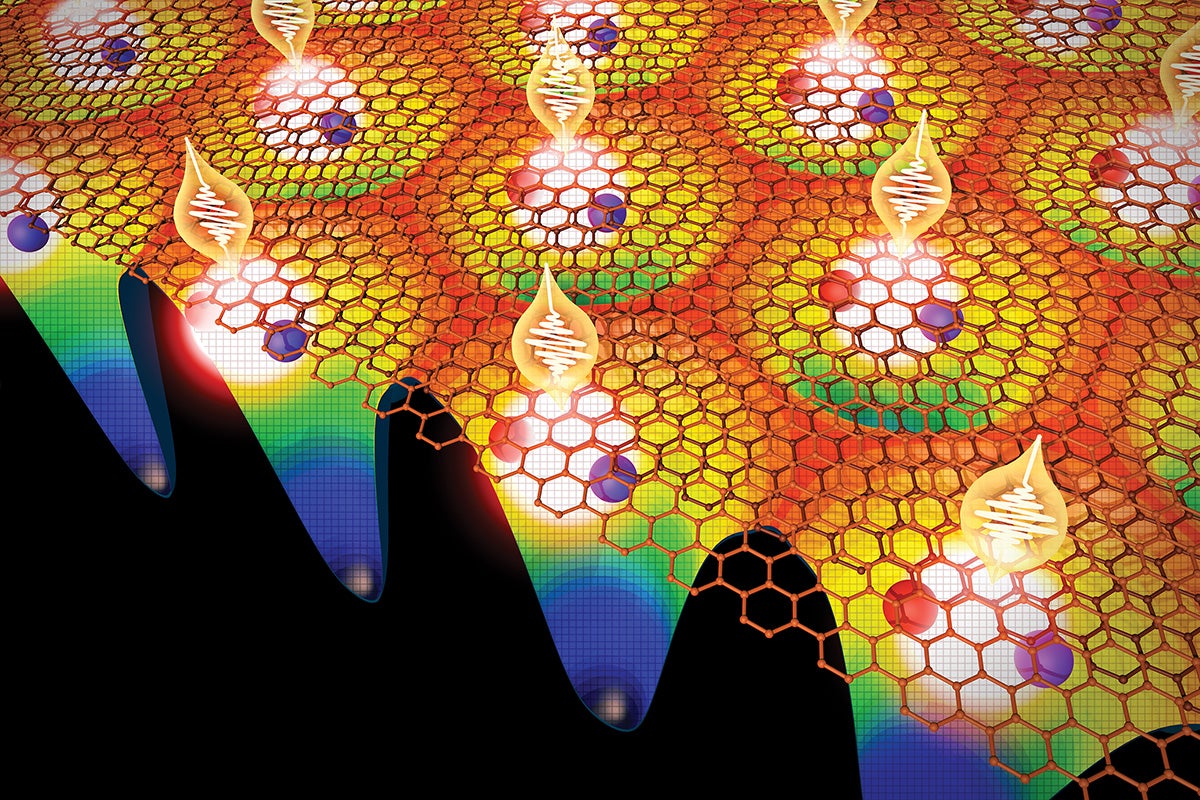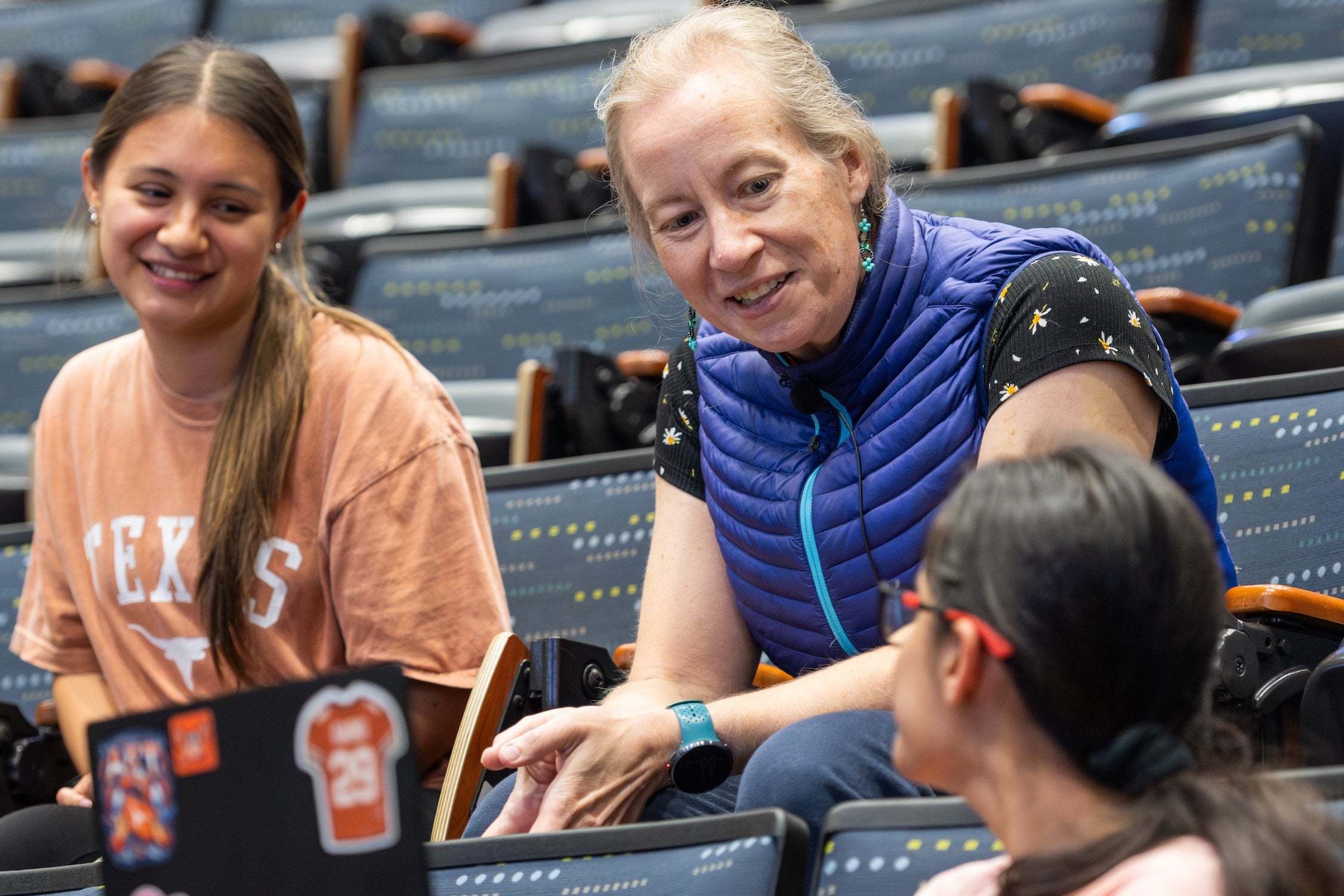Improved Method for Estimating the Hubble Constant with Gravitational Waves
There’s a big debate in cosmology about how fast the universe is currently expanding.

The collision of two neutron stars in 2017, seen in an artist's rendering, created both gravitational waves and electromagnetic emissions. Illustration credit: Robin Dienel/Carnegie Institution for Science.
The two main methods for measuring the universe’s rate of expansion, called the Hubble constant, yield two different values, leading to lively debate among scientists. This “Hubble Tension,” as it is known, suggests that either the measurements are wrong, or scientists are missing something important about how the universe works.
Now a team led by Hsin-Yu Chen, assistant professor of physics at The University of Texas at Austin, has refined a method for measuring the Hubble constant that could help resolve the Hubble Tension. This month, they published a description of their method in the journal Physical Review Letters.
There’s a third way to measure the Hubble constant that uses collisions of extremely massive objects in space—such as black holes and/or neutron stars—as “standard sirens.” These collisions can release ripples in spacetime called gravitational waves and sometimes also electromagnetic emissions, such as visible light or radio waves. When astrophysicists observe both effects at the same time—called multi-messenger astronomy—the information they get about the objects’ distance and speed away from us indicates how fast the universe is spreading apart.
But there’s a wrinkle. Chen points out that the standard-siren method is prone to selection bias. In other words, the set of collisions that scientists detect in both modes might not represent the full range of collisions that are happening. For example, maybe some of the colliding objects are not massive enough to be picked up with gravitational-wave detectors or the angle at which scientists observe them makes it hard to see with telescopes, so they don’t get a representative sample.
Chen and her colleagues developed a method that uses the gravitational-wave data to check the viewing angles of the colliding objects to evaluate whether the data set they’re using has this kind of selection bias. And if it does, they proposed a statistical approach to correct for it, leading to a more accurate estimate of the Hubble constant.
“There are many ways to measure the Hubble constant, but the [astrophysics] community likes this approach of using gravitational waves in particular because it’s simple, it’s easy to understand and we can control for biases,” Chen said.
To test their method, they generated 200 simulated binary mergers and showed that using their corrections, the Hubble constants that would be estimated based on observations from both telescopes and gravitational-wave detectors on Earth were very close to a preselected Hubble constant value that was built into their simulation. In other words, their method successfully removed the selection bias due to masses or angle of observation.
So far, out of more than a hundred gravitational-wave events detected by the big international observatories LIGO, VIRGO and KAGRA, only one collision has been observed with both gravitational waves and electromagnetic emissions. And it might take dozens more of these multi-messenger signals to accurately measure the Hubble constant with this improved standard-siren method. But the art of multi-messenger astronomy is rapidly improving, and Chen is hopeful that enough events will be observed in the next decade or two to finally solve the Hubble Tension.
Chen’s co-authors are Colm Talbot at the University of Chicago and Eve Chase at Los Alamos National Laboratory.
This work was made possible by the National Science Foundation, NASA, an MIT Kavli Fellowship and an Eric and Wendy Schmidt AI in Science Fellowship.



